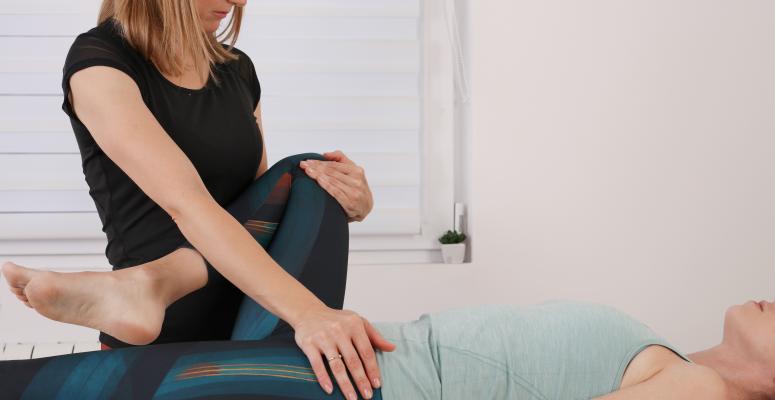
Pelvic floor physical therapy is a specialized treatment program that is intended to help treat issues in the pelvic floor area of the body. Your pelvic floor is made up of muscles and connective tissue that support important organs in your pelvis. These include the bladder, large intestine and reproductive organs. The pelvic floor muscles help hold these organs in place as well as providing flexibility assisting with bodily functions of peeing, pooping and sexual intercourse.
These muscles can become too loose (too weak) or too tight due to trauma, overuse, hormonal changes or certain conditions. These can lead to struggles with incontinence, pelvic organ prolapse and other issues. To help combat these issues, you may be referred to physical therapy for treatment.
10 goals of pelvic physical therapy
The goals of pelvic physical therapy are personalized based on your individual condition and needs. Your physical therapist will do a thorough assessment of your symptoms and develop a customized treatment plan to address your specific concerns and help you reach your peak pelvic health. Treatment goals can include:
- Pelvic pain relief — Pelvic physical therapy can help reduce pain you are experiencing in your pelvic floor region. This may include trigger point therapy and electrical stimulation for external therapy techniques. As many as 24% of women can experience chronic pelvic pain during their reproductive years.
- Strengthen pelvic floor muscles — If your pelvic floor dysfunction is caused by weak pelvic muscles, pelvic physical therapy can help you increase the strength in your muscles and that can lead to improved pelvic health.
- Improving bladder function — Urinary incontinence affects a number of women in their life. It can range from approximately 19% to 30% of women aged 19 to over 65. Pelvic floor physical therapy can help patients strengthen their pelvic floor with exercises to help improve muscle tone and help alleviate symptoms of urinary incontinence. It can also help men who struggle with urinary incontinence.
- Enhancing bowel function — Affecting up to almost 30% of the U.S. population, constipation is one of the most common gastrointestinal problems. Pelvic physical therapy can help retrain muscles to address issues and improve the ease of defecation.
- Preparation for pregnancy and postpartum care — Pregnancy can take a toll on a woman’s pelvic region, leading to issues during and after pregnancy. Pelvic physical therapy during pregnancy can help prepare your pelvic floor region for delivery, while postpartum therapy can help prevent issues from developing after childbirth.
- Treating pelvic prolapse — Pelvic prolapse happens when the pelvic organs descend from their normal positioning, leading to pelvic issues. Pelvic physical therapy can help alleviate and improve symptoms from pelvic prolapse.
- Pre- and post-surgery rehabilitation — Pre-/post-surgery rehab can be beneficial in the surgical process. Pelvic physical therapy before surgery can help you be prepared for surgery and can help reduce inflammation and pain during recovery by having your body in a better physical condition. After surgery, physical therapy can help reduce inflammation and pain, and improve any strength lost due to surgery.
- Addressing sexual dysfunction — Pelvic floor physical therapy can be beneficial to men and women experiencing sexual health problems. Manual therapy techniques can help normalize muscle tone and improve muscle relaxation in men who experience premature ejaculation and erectile dysfunction. Vaginal dilators can help patients learn to relax the muscles in the pelvis and can lead to an improved sexual experience with less pain.
- Education and lifestyle modification — Pelvic floor physical therapy can help educate you on the aspects of your pelvic floor anatomy, how it works and proper hygiene. It can help you learn how to improve your pelvic floor through any modifications you may need to make.
- Improving overall quality of life — Pelvic physical therapy can address health issues and help to promote an overall well-being of the pelvic floor region. This can help to improve the quality of life of those who are experiencing pelvic conditions.
Men and women both can experience pelvic floor issues. Pelvic physical therapy can be beneficial to helping improve the symptoms you are experiencing and help improve your quality of life.
Alliance PTP is ready to help you find a caring partner to address your pelvic floor issues
Need a partner to help you address your pelvic floor struggles? Alliance Physical Therapy Partners is here for you.
We can help you find the in-person or virtual physical therapy that’s right for you, and even better, we’ll help you find a team of caring professionals who are ready to walk with you through your entire PT journey.
Contact us today to start getting the care you need.
Get Help at a Location Near You
